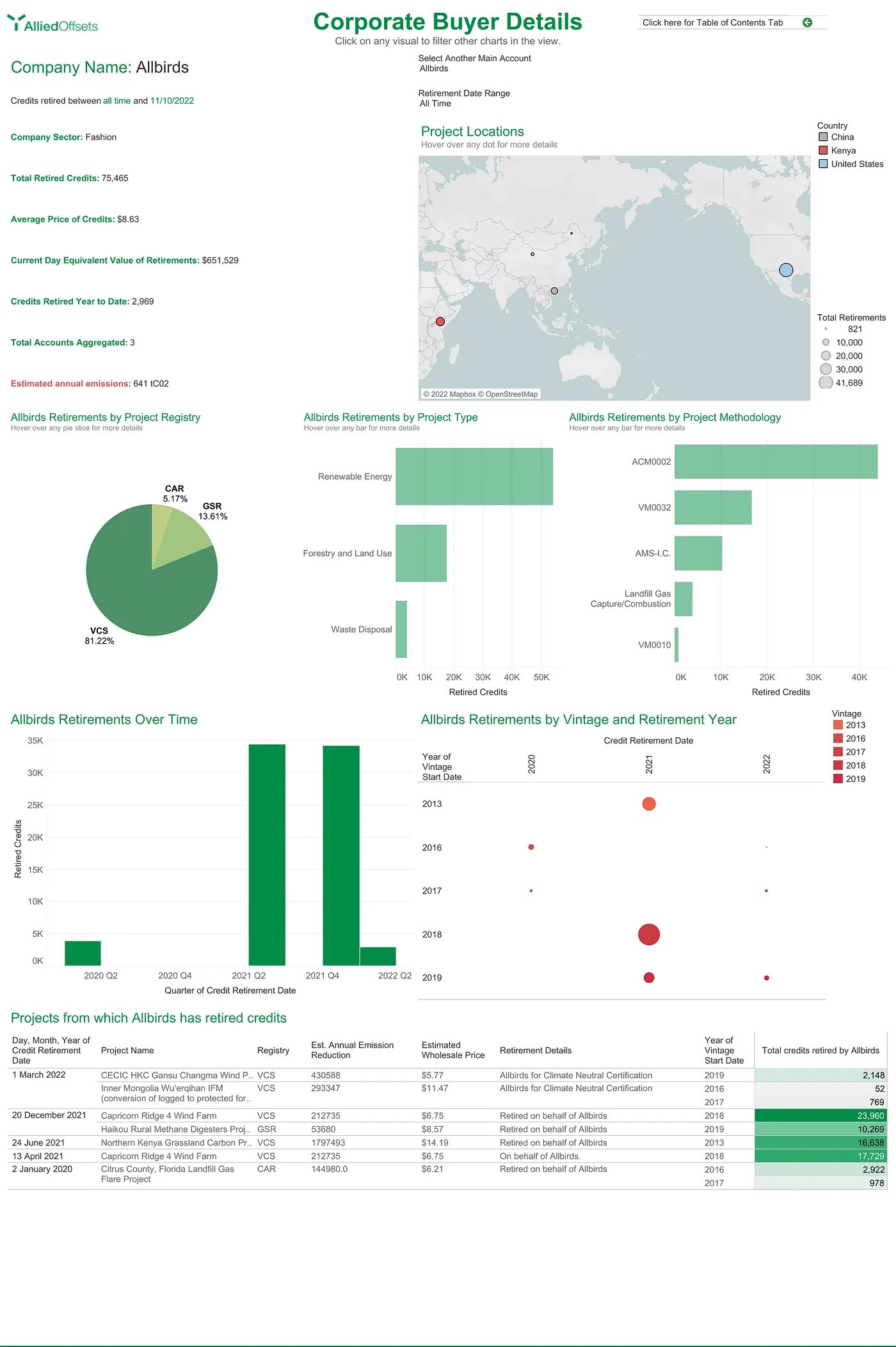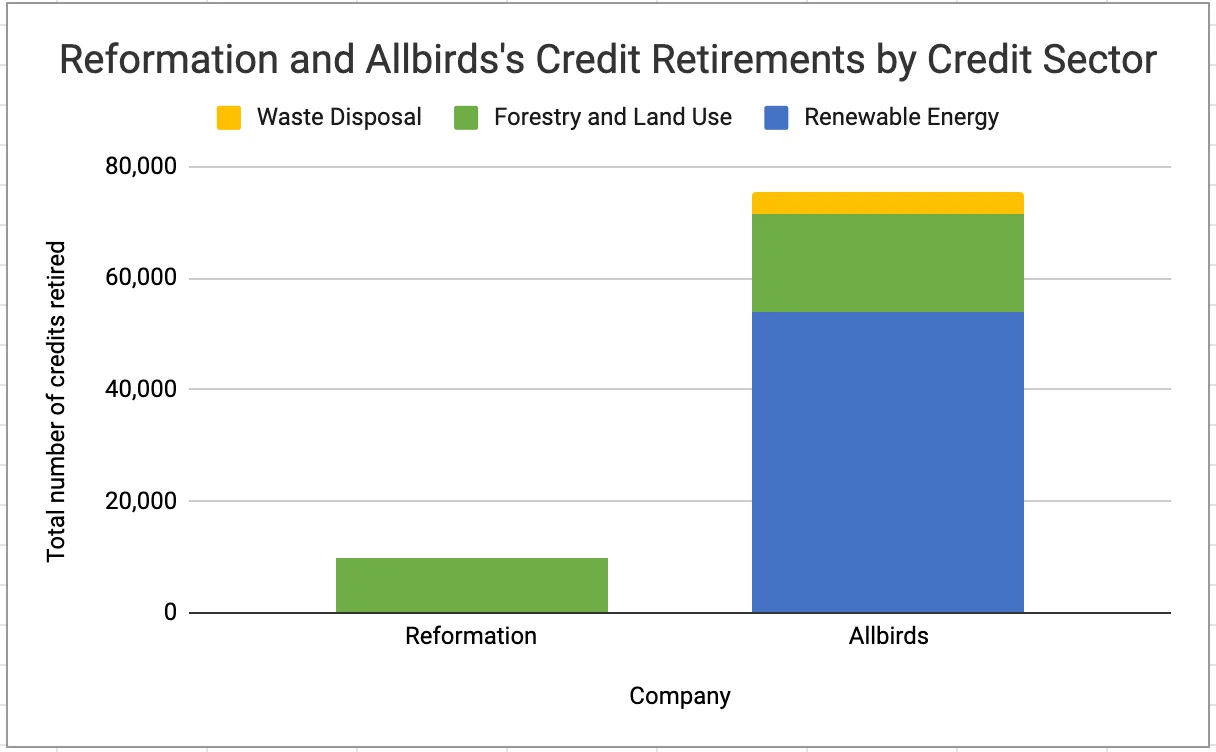This week, we look into sector level data on offsetting and net-zero targets in the fashion industry.

Bloomberg estimates that the fashion industry contributes up to 10% of global CO2 emissions. The emissions are driven by materials sourcing, shipping, and water consumption, among others.
In spite of the generally significant carbon footprint from fashion companies, an increasing number of brands position themselves as sustainable, in hopes of gaining a competitive advantage in the eyes of a modern customer (and a reason to charge a premium).
An important part of this positioning and related corporate communication is the growing number of “net zero” or “carbon neutral” claims and labels which rely on self-reported data provided by brands. Typically, “net zero” means that a company’s impact has been neutralized either through emissions reductions, or by offsetting its Scope 1 and 2 emissions (less often, Scope 3). At the same time, a growing number of organizations and initiatives (CDP, ICVCM, SBTi, Climate Active, VCM-II, among others) are encouraging companies to make clearer what their sustainability efforts entail — either directly, by gathering data, or by making guidelines on how companies should disclose their activities.
In this blog, we look into the visibility of the offsetting based on corporate communications by some of these brands and compare it with AlliedOffsets data. We examine two brands as a study: Reformation and Allbirds.

One Climate Neutral certified brand is Reformation, who say the they have been carbon neutral since 2015 and explicitly state their commitment to decreasing their emissions.

As discussed in previous blogs, we have been standardizing retirement data across registries to better understand what companies are doing in the VCM.
In the case of Reformation, we found 9,700 Forestry and Land Use credits retired by Reformation in 2016 and 2018 from Ecomapua Amazon REDD Project and RMDLT Portel — Para REDD Project. The brand’s Climate Neutral page says that all of its emissions for the year 2021 have been offset (33,707 tCO2e on Climate Neutral’s website — however, the footprint is equal to 31,920 tCO2e according to Reformation’s sustainability reporting) on top of its commitment to reduce absolute GHG emissions and use more renewable resources and circular methodologies in their value chain (the “Estimated annual emissions” box in the buyer details page from AlliedOffsets only accounts for Scope 1 and 2 emissions — the same rule applies to Allbirds’s page).

Reformation also have a website where they sell carbon credits to offset environmental impact of an international flight (worth 3 renewable energy credits from the Parque Eolico Maldonado project for £14, roughly equal to £4.67 per credit) or an individual 12 months worth of GHG emissions (here the impact is offset by 16 credits from AgroCortex REDD+ project for £100 in total and equal to £6.25 per credit), among others. Looking back on Reformation 2021 emissions, only ~⅓ of the company’s emissions in 2021 can be attributed to two projects in the 11 registries we examined without accounting for prior emissions.
Allbirds are also Climate Neutral certified. The company shares its journey to a more sustainable and circular value chain, as well as their commitment to offset any residual GHG emissions as communicated in their 2020 sustainability report. The report states that for both 2019 and 2020, Scope 1, 2, and 3 emissions had been offset with carbon credits (it also reports that Allbirds’s 2020 carbon emissions were 38,439 tCO2e).
The emissions have been offset with credits generated by the Envira Amazon Project, Argentina Regenerative Wool Project, Citrus County Landfill Gas Destruction Project (credits retired in 2020), Sichuan Clean Cookstoves Project, Big Smile Wind Farm Project, Capricorn Ridge Wind Project (credits retired in 2021), Montana Grazing Project and a renewable energy portfolio. The last offsetting data available through Climate Neutral says that Allbirds have offset all of its emissions (50,336 tCO2e) last year using avoided deforestation and wind generation projects.

Using AlliedOffsets data, we were able to match 75,465 Forestry and Land Use, Renewable Energy, and Waste Disposal credits to Allbirds — most were retired across 2021, with relatively small retirements in 2020 and 2022 (so far).

Both Reformation and Allbirds have shown a commitment to significantly reducing their carbon footprint, incorporating more sustainable sourcing and methods of production in their value chain, as well as offsetting any residual emissions, which is laudable.
However, there is a need for increased transparency in terms of reporting emissions and claiming retirements, so that all credits retired by a company can be tracked and its impact accurately measured.
This is a typical issue when it comes to corporate offsetting and should be alleviated by companies being clearly identified as the retiring entity or the actual beneficiary of retired credits in registry records. Allbirds have become more clear about their offsetting recently, as most of their visible retirements come from 2021 and 2022 (this might be due to Climate Neutral pushing the brand to be more transparent), but more transparency is needed.
Lastly, if credits are retired towards a corporate net zero goal, the year for which emissions are compensated should be tagged to enable easier footprint — offset matching.
